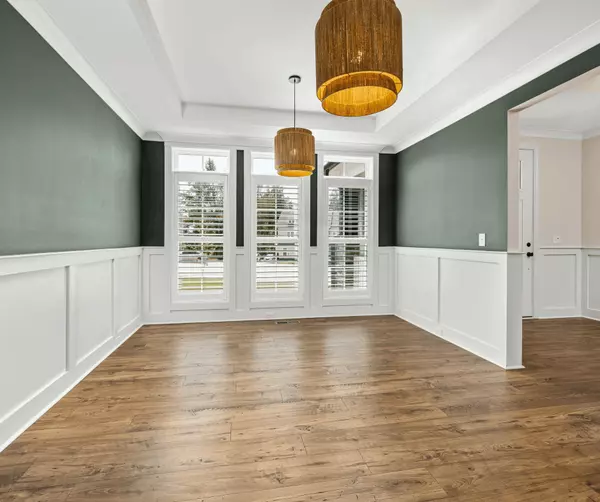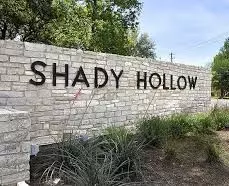The Hidden Costs of Self-Managing a Rental in Austin — and How to Protect Your ROI
Owning a rental property in Austin can be an incredible investment — but managing it yourself isn’t always the money-saving strategy it appears to be. While many new landlords try to “DIY” their first rental property to cut costs, the reality is that self-management can quietly chip away at your returns through hidden expenses, legal risks, and time-consuming obligations that aren’t obvious upfront.
If you’re an investor focused on cash flow, long-term appreciation, and peace of mind, here’s what you need to know about the real cost of self-managing a rental in Austin, TX.
1. Vacancy Loss: The Most Expensive Hidden Cost
Every day your property sits empty, you’re losing money — and in Austin, the average vacancy loss for self-managed properties is much higher than for professionally managed ones.
Common causes of DIY vacancy loss include:
-
Pricing the property incorrectly
-
Slow response time to inquiries
-
Poor-quality listing photos
-
Limited tenant screening resources
-
Not having a streamlined showing or application process
Example:
If your rent is $2,300/month and you sit vacant for an additional 10 days due to slow processes, that’s $766 lost instantly — far more than a month of professional management fees.

2. Legal Liability & Compliance Risks
Texas is landlord-friendly, but Austin has specific city regulations and state-level laws that must be followed precisely.
Self-managing landlords often unknowingly violate:
-
Fair Housing laws
-
Security deposit handling rules
-
Repair timelines
-
Notice-to-enter requirements
-
Lease agreement compliance
Mistakes here can lead to:
-
Fines
-
Forced refunds
-
Legal disputes
-
Even court involvement
A single Fair Housing misstep — even accidental — can cost thousands.
Property managers protect you by:
-
Using compliant lease agreements
-
Following legal timelines exactly
-
Documenting every interaction
-
Keeping you aligned with Austin & Texas regulations
3. Maintenance Markups & Emergency Repairs
Many investors assume self-managing means cheaper maintenance — but it can be the opposite.
Self-managed owners often end up paying:
-
Retail pricing instead of negotiated vendor rates
-
Higher weekend/emergency fees
-
More frequent service calls due to improper troubleshooting
-
Overpriced or unnecessary repairs
Plus, you have to be available 24/7.
If the AC breaks at 11 p.m. in August (and it will in Austin), that’s your problem — not a manager’s.
Professional managers typically have:
-
Preferred vendors
-
Reduced pricing
-
Faster response times
-
Accountability systems
-
Maintenance coordination software
Over a year, this often saves an owner hundreds, if not thousands.
4. Poor Tenant Placement = Long-Term Costly Headache
A great tenant is your most valuable asset.
A bad tenant is your biggest liability.
Self-managing landlords typically:
-
Don’t run full background + credit + rental history screenings
-
Don’t check eviction records
-
Don’t verify income correctly
-
Don’t detect “professional tenants”
This leads to:
-
Late payments
-
Excessive wear and tear
-
Lease violations
-
Higher turnover
-
Evictions
Even a single turnover costs $3,000–$5,000 on average when you consider:
-
Vacancy
-
Repairs
-
Cleaning
-
Re-listing
-
Utilities
-
Time
Professional screening = fewer surprises and more reliable renters.
5. Time — The Most Undervalued Expense
Managing a rental successfully requires dozens of tasks each month, including:
-
Marketing
-
Showing the property
-
Screening applicants
-
Writing leases
-
Collecting rent
-
Coordinating repairs
-
Doing inspections
-
Handling complaints
-
Managing move-ins/move-outs
-
Keeping documentation
-
Enforcing lease terms
When you add up the hours, self-managing often averages 10–20 hours per month, and more if things go wrong.
Ask yourself:
What is your time worth?
If you value your time at even $40/hour, that’s $400–$800/month in hidden labor — far above typical Austin property management fees.
6. Emotional Stress & Burnout
This is the hidden cost no one talks about.
Self-managing landlords often experience:
-
Stress over rent collection
-
Conflict with tenants
-
Late-night maintenance calls
-
Overwhelm during turnovers
-
Anxiety about legal issues
-
Frustration with unreliable contractors
Professional managers act as a buffer, protecting your peace of mind and your investment.
7. Reduced ROI from Inefficient Systems
The truth is simple:
Professional property management makes your property operate like a business.
Self-management often results in:
-
Messy bookkeeping
-
No documented maintenance records
-
Inconsistent communication
-
Missing late fees
-
Missed market updates
-
Underpriced rent
A property manager typically increases ROI by:
-
Reducing vacancy
-
Securing better tenants
-
Ensuring compliant rent increases
-
Improving tenant retention
-
Streamlining maintenance
-
Keeping accurate books
Even a $50 rent increase — which a manager can justify through data — often covers the entire management fee.
Self-Management Isn’t Free — It’s Expensive
While managing your rental yourself may feel like the “budget-friendly” route, the hidden costs tell a different story.
Vacancy, legal mistakes, poor tenant placement, maintenance inefficiencies, and the value of your time can cost far more than a professional management fee.
If your goal is to maximize ROI, minimize stress, and protect your investment, partnering with an expert property manager lets your rental truly perform like an asset — not a second job.
Learn more about our Austin Property Management Services here:
Categories
- All Blogs (80)
- Cofield Property Management (1)
- Home Buying Tips (8)
- Home Improvement (2)
- Home Selling Tips (4)
- Home Tours (23)
- Local Events & Lifestyle (7)
- Market Updates (7)
- Neighborhood Guides (20)
- New Construction & Communities (24)
- Relocation Resources (14)
- Success Stories & Client Testimonials (1)
Recent Posts










GET MORE INFORMATION

Agent | License ID: 701768
13003 South Madrone Trail, Austin, Texas, 78737, United States







